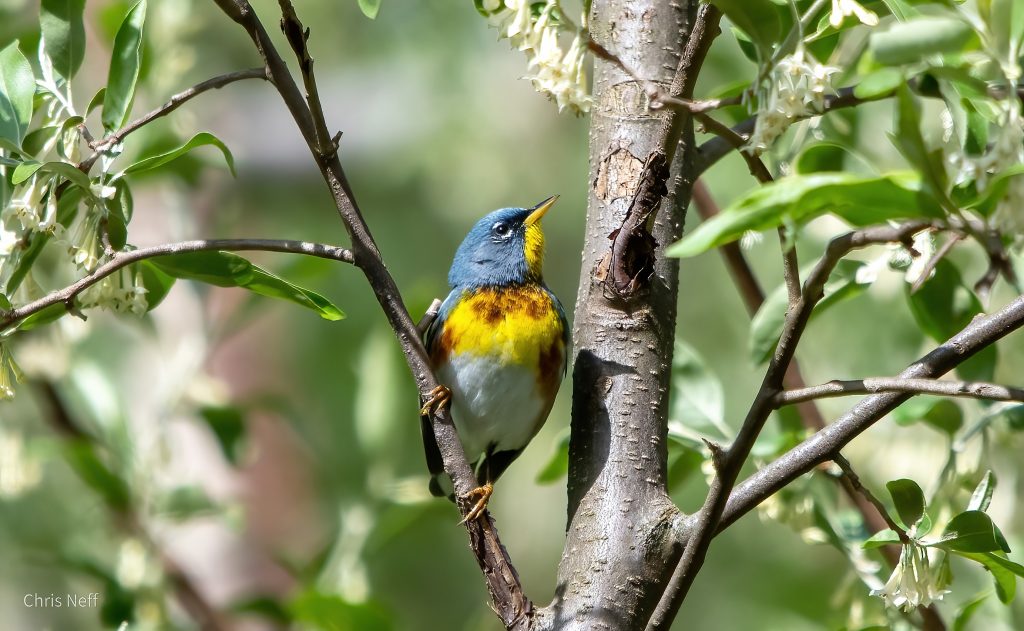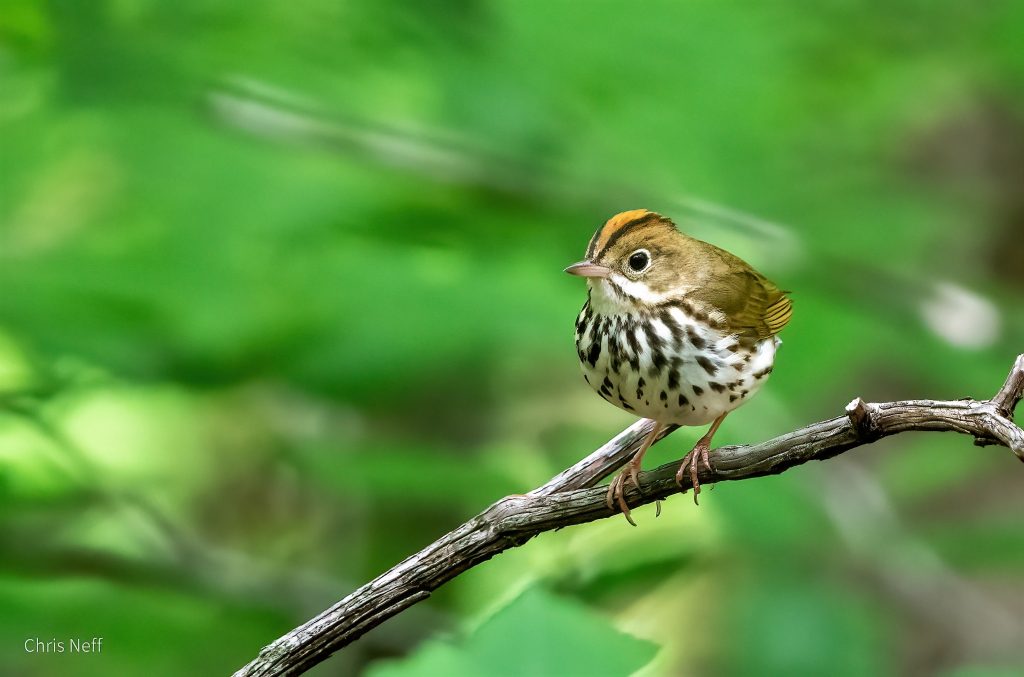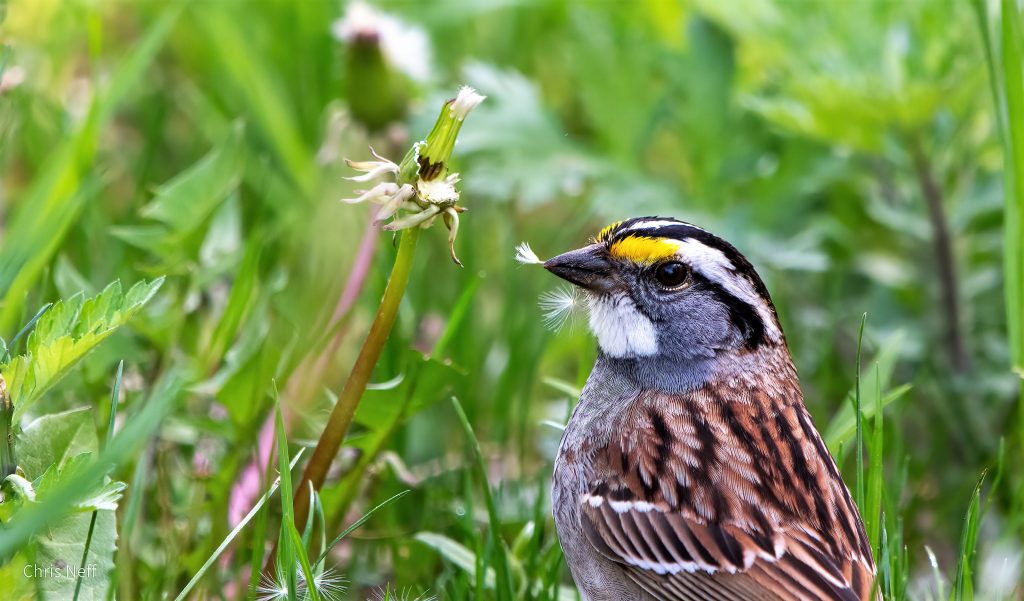Bird populations have experienced major losses over the past 50 years: the breeding bird population in the Americas has declined by 3 billion (3,000,000,000) birds (or by 29%) since 1970. Habitat loss, intensification of agriculture, and coastal development, exacerbated by climate change have all contributed to these declines. In addition, there is direct anthropogenic mortality, including bird collisions with structures and mortality due to cats.
New Jersey Audubon has been involved in studies of bird mortality at wind farms and more recently collecting data on bird collisions in urban areas. Specifically, we have been monitoring bird mortality and injury at high-rise reflective buildings in Newark to determine the extent of the problem.
In addition, we are initiating “Keeping Birds Safe” to make sure that our members and everyone interested are fully aware of these issues and to encourage them to act on behalf of our birds.
Two areas of concern where we can have an impact are bird collisions with buildings and bird deaths from cats as predators. Over time, we intend to address and hopefully provide solutions to both of these problems in order to save our birds, but at this time, we are actively addressing bird collisions as a key concern for which we have some answers and solutions.
Bird Collisions
Migration
Every Fall, birds fly south from their breeding places to warmer locations where they can find sufficient food during the northern winters. And they repeat this effort in Spring to go to the places which best provide food and safety for bearing and rearing chicks. Both the juvenile and the adult birds follow paths defined by many years of migrations, navigating via the sun, stars, the earth’s magnetic field as well as other senses such as smell and sight. It is always a dangerous effort for such a tiny, light-weight being – through difficult weather conditions, often in the dark and with very little food.
But people have upped the difficulties for birds over the last decades. Light pollution has been increasing rapidly, and we have developed architectural glass which allows us to create buildings that are fully reflective on the exterior and therefore invisible to birds. This glass can be used on highrises and single unit homes alike, allowing for large expanses of reflection and invisibility.
Because of bright artificial lighting in the sky, birds on migration can become confused and fly directly into urban centers, harming or killing themselves by collisions with windows after exhausting themselves by getting trapped in the lights. Birds become disoriented and stay with the lights rather than continue on their migratory flights; they lose a lot of their much-needed energy and can succumb to other dangers. Homeowner bright lights also direct birds to windows and perhaps harm or death.
It is estimated that about one billion birds die each year in the United States due to collisions with glass on buildings. Most of the deaths occur during the spring and fall migration periods in daytime when birds are seeking food for sustenance for the upcoming nightly flight. Mortality is especially high in the fall when the juveniles migrate south for the first time and are not as observant or experienced as adults.
Lights Out
There are many “Lights Out programs” throughout the country that inform people of the dangers to birds of excess night lighting. These programs build public awareness of the problem in order to encourage governments, building managers and homeowners to take steps to protect migratory birds. These programs advocate turning off unnecessary lights at night, especially during migration. City governments can discourage any bright skyward-pointing lights; building managers can use motion sensors, shades, use localized lighting rather than full room lighting in glass buildings at night.
This is not an urban only issue. Homeowners everywhere can decrease the amount of light emitted at their homes. You can use only shielded downward-pointing lights to illuminate walkways, keep lights out in unoccupied rooms at night, refrain from using floodlights around the home. All of these solutions can both protect birds and reduce unnecessary energy consumption while maintaining personal safety.
Is Your Home Safe for Birds?
Although we usually think that it is the tallest glass skyscrapers that are responsible for this avian disaster, more deaths occur at glass on lower levels, on setbacks and balconies. It is estimated that about one half (500,000,000) of the bird deaths caused by glass collisions occur at residences. We can avoid many of these collisions by paying attention to and modifying the glass windows in our homes.
Window placement
The most common cause of bird collisions is reflected landscape near windows. Birds seek food, shelter, and safety in vegetation; because they do not perceive glass as a barrier, when they see reflected plants and trees, they fly right into it. Depending upon the time of day, the position of the glass, the interior or exterior lighting, windows can reflect landscape, mirror sky, or create black holes which appear as pathways. From the outside, take a look at your windows at different times of day to determine if they are safe for birds or not. If they are highly reflective of landscape or sky, they could be dangerous to birds. If you have seen dead or injured birds beneath certain windows, these can be modified.
Bird Feeders/ Nest Boxes
It is a good idea to locate bird feeders and nesting boxes close to windows, within two to three feet. If the structures are close to windows, upon exiting, birds cannot gather the speed to harm themselves.
If you have a lot of open space refer to our NEST BOX PLACEMENT page
Window reflectivity
There are many solutions such as adding netting or screens to the outside of windows, allowing enough space so that a bird will bounce off of the material rather than crash into the window. Applying a window film on the outside of a window will advise a bird of a danger. You can find products like this from CollidEscape. This easily found film allows you to view outside but birds cannot see reflections (www.CollidEscape.org). Decorative films on windows can deter birds from flying into reflective glass with little reduction in visibility for you; one style is Solyx Bird Safety Window Films, which have lines or dots engineered into the film BIRD SAFETY WINDOW FILMS. Another useful option is Acopian Bird Savers (www.birdsavers.com). These are outdoor string curtains which you can hang in front of the windows outside; you can buy them from Acopian or make them yourself. Their website can direct you either way.
The American Bird Conservancy has many approved and rated solutions to bird collisions that you can find at HOW TO KEEP BIRDS FROM HITTING WINDOWS
Citizen Science
How serious are collisions in New Jersey?
You can help by contributing to bird mortality research throughout the state. Starting in August 2021, we are launching a pilot program for the collection of data. We ask you to go to the dBird website to post key information – date, time, and location of birds that you have found dead or wounded and to add photos. In addition, you will be asked to include other information such as species, age and sex if it is known to you; there is also room for notes. This applies to all bird deaths observed – by collisions with buildings, both high-rise and residential, by being hit by a vehicle, by falling out of a nest as well as unknown reasons.
Cats
All research on bird mortality in the United States points to cats as the largest contributor to the death of birds. This is a particularly difficult concern to approach both because so many of us have cats as pets and because there is an unlimited number of stray and feral cats in the world. But we can do our part by keeping our cats inside. There are also some tools we can use when we let our cats outside: Birdsafe or Birdbesafe collars allow birds to see cats and have time to escape; bells on collars provide a sound cue to birds; electric cat fences stop cats from roaming beyond your yard; and spaying/neutering make cats less aggressive. If you find a stray cat, you should bring it to a no-kill shelter. There are other options on the American Bird Conservation web site SOLUTIONS FOR PET CATS:
Would you like more information or want to help NJ Audubon continue this important research?
Email us at: birdstrike@njaudubon.org






